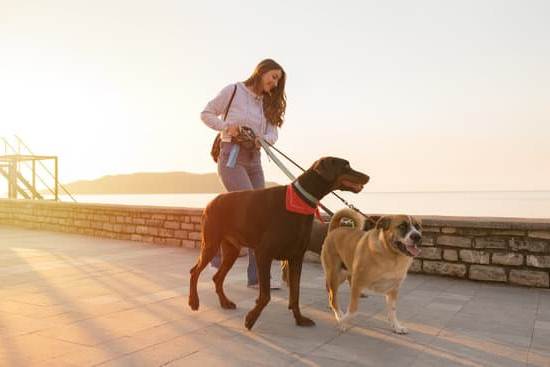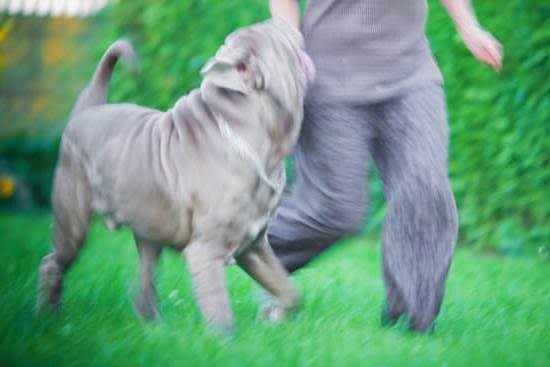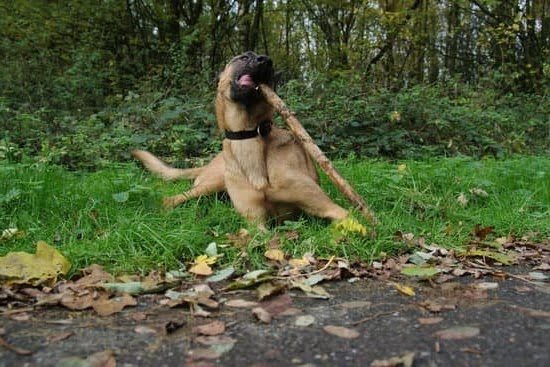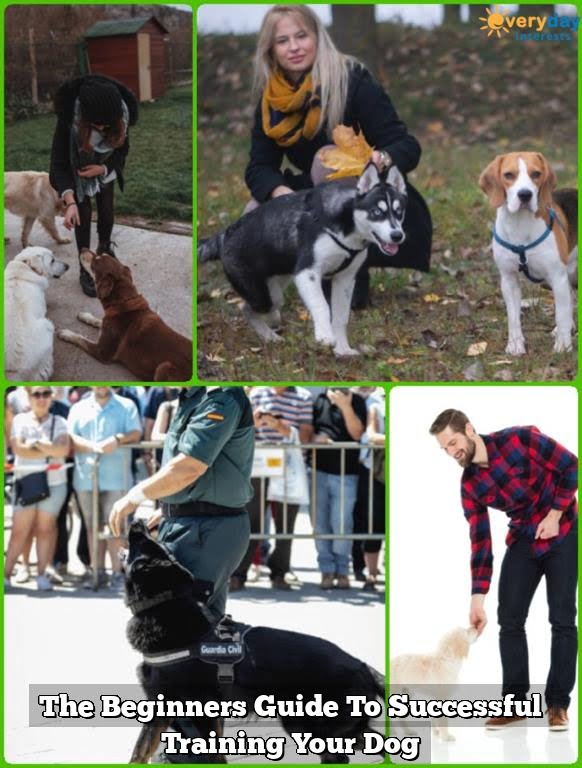Guide dogs play a crucial role in assisting individuals with visual impairments, providing them with not only physical guidance but also emotional support and independence. The training of guide dogs is essential to ensure that they can effectively fulfill their responsibilities and make a positive impact on the lives of those they assist.
But how can you tell a guide dog in training? In this article, we will explore the characteristics of guide dogs in training, different training programs available, the training process from start to finish, as well as the challenges and successes that come with it.
The role of a guide dog goes beyond simply leading their handler from one place to another. These highly trained dogs are responsible for maneuvering through obstacles, stopping at curbs, avoiding potential hazards, and obeying commands. The bond between a guide dog and its handler is built on trust and reliance, making the proper training of these animals crucial for their success in enhancing the independence and mobility of individuals with visual impairments.
Identifying a guide dog in training involves recognizing specific physical and behavioral cues that differentiate them from fully trained guide dogs. Understanding these characteristics can provide valuable insight into the progression of a guide dog’s training journey. Additionally, by understanding the importance of proper etiquette when interacting with guide dogs in training, members of the public can contribute to their development while respecting their task-focused roles.
The Role of Guide Dogs
Guide dogs play a crucial role in assisting individuals with visual impairments, providing them with the freedom and independence to navigate the world. These highly trained animals are not only companions but also serve as guides, aiding their handlers in various daily tasks. The specific tasks and responsibilities of guide dogs for individuals with visual impairments can vary, but they generally include:
1. Navigation: One of the primary duties of a guide dog is to safely navigate their handler through various environments, including crossing streets, navigating obstacles, and maneuvering around crowded or confined spaces.
2. Hazard avoidance: Guide dogs are trained to identify potential hazards such as low-hanging branches, uneven terrain, or other obstacles that may pose a risk to their handler’s safety. They use their keen senses to alert their handler and guide them away from these hazards.
3. Positioning: Guide dogs are trained to maintain a consistent walking pace and position relative to their handler, ensuring that they provide a clear path without pulling or lagging behind.
Identifying a guide dog in training can be challenging for those who are not familiar with the specific cues that differentiate them from fully trained guide dogs. Some physical and behavioral characteristics that may indicate a guide dog in training include:
Understanding how to recognize a guide dog in training is essential for members of the public when interacting with these animals and their handlers respectfully. By being aware of these cues, individuals can ensure that they are mindful of the training process while still providing necessary assistance and support when needed.
Characteristics of Guide Dogs in Training
When encountering a guide dog in training, it is important to be able to differentiate them from fully trained guide dogs. Guide dogs in training display certain physical and behavioral cues that set them apart from their more experienced counterparts. Understanding these characteristics can help members of the public interact appropriately with these dogs and support their training process.
Physical Cues
One of the key physical characteristics of a guide dog in training is the presence of a harness or vest indicating that they are undergoing training. This distinguishing feature serves as a signal to others that the dog is still in the learning phase and should not be disturbed or distracted while working with their trainer.
Additionally, guide dogs in training may exhibit younger or less polished physical appearances compared to fully trained guide dogs, as they are still growing and developing their skills.
Behavioral Cues
In terms of behavior, guide dogs in training may display signs of curiosity or excitement when encountering new environments, people, or stimuli. They may also demonstrate behaviors such as sniffing, wagging their tails, or displaying increased energy levels as they navigate through various situations under the guidance of their trainers.
It is important for members of the public to recognize these behavioral cues and respond respectfully by allowing the guide dog in training to focus on their learning tasks without unnecessary distractions.
Training Markings
Some organizations may use specific markings or tags on the harnesses or vests of guide dogs in training to clearly distinguish them from fully trained guide dogs. These markings often include phrases such as “Guide Dog in Training” or “Do Not Pet” to communicate to others that the dog is still undergoing essential instruction and should not be approached without permission from their trainer.
Recognizing these visual cues can help individuals understand and respect the ongoing training process for these remarkable service animals.
Understanding how to identify a guide dog in training involves recognizing both physical and behavioral cues that differentiate them from fully trained guide dogs. By being mindful of these characteristics and acknowledging the importance of uninterrupted training for these dedicated animals, individuals can contribute to creating an environment that supports the development of future guide dogs who will positively impact the lives of individuals with visual impairments.
Types of Guide Dog Training Programs
When it comes to training guide dogs, there are various programs and methods available to ensure that these dogs are prepared to assist individuals with visual impairments. One type of training program is the in-house training provided by guide dog organizations. In this approach, puppies are placed with volunteer puppy raisers who provide basic obedience training and socialization.
Once the puppies reach a certain age, they are returned to the organization for formal guide dog training. These programs often have a structured curriculum that covers everything from obedience and mobility skills to exposure to different environments.
Another type of guide dog training program is the prison puppy program, where select inmates are responsible for raising and training the guide dog puppies. This not only provides valuable canine assistance for individuals with visual impairments but also offers rehabilitative benefits for the inmates involved in the training process.
In addition, some guide dog organizations offer specialized training programs for specific needs, such as guiding individuals who have both visual and hearing impairments. These programs focus on teaching the dogs unique cues and signals to navigate their handlers through various obstacles safely. Understanding these different types of guide dog training programs can help individuals make informed decisions when it comes to choosing a program that best suits their needs or preferences in obtaining a guide dog.
Training Process
When it comes to training a guide dog, the process is a comprehensive and detailed one that covers various stages from puppyhood to graduation. Here are the key steps involved in the training process of a guide dog:
- Selection of Potential Guide Dogs: The first step in the training process is the selection of potential guide dogs. This involves assessing traits such as intelligence, temperament, and physical health to determine if a dog is suitable for guide dog training.
- Puppy Raising: Once selected, the puppies undergo socialization and basic obedience training in a loving home environment. This stage is crucial for developing good behavior and preparing them for advanced training.
- Specialized Training: As the puppies mature, they undergo specialized guide dog training that includes tasks such as obstacle navigation, intelligent disobedience, directional commands, and safe road crossing.
- Matching with Handlers: After completing their formal guide dog training, the dogs are then matched with individuals with visual impairments based on their specific needs and lifestyle.
- Graduation and Ongoing Support: Upon successful completion of the program, the guide dogs graduate and begin their new role as an essential companion for individuals with visual impairments. Ongoing support and follow-up training may also be provided to ensure continued success in their role.
Throughout each stage of the training process, dedicated trainers work tirelessly to ensure that guide dogs are equipped with the necessary skills and behaviors to provide reliable assistance to their handlers.
It’s important to note that not all dogs selected for guide dog training will successfully complete the program. However, those who do undergo this rigorous process emerge as invaluable assets to individuals with visual impairments, providing them with independence, safety, and companionship.
Challenges and Successes
Guide dog training is a crucial process that requires extensive dedication and commitment from both the trainers and the dogs themselves. Throughout this journey, there are bound to be various challenges and successes that trainers and handlers encounter.
One of the common challenges faced during guide dog training is the need to ensure that the dog remains focused despite distractions in their environment. This can include loud noises, unfamiliar scents, or other animals that may divert the dog’s attention away from their handler.
Another challenge in guide dog training is ensuring that the dogs are able to navigate different environments and scenarios confidently. This involves exposing them to various situations such as busy streets, crowded public transport, and indoor settings like restaurants or shops. The ability of a guide dog in training to adapt to these diverse environments is essential for their future role in assisting individuals with visual impairments.
On the other hand, one of the most rewarding aspects of guide dog training is witnessing the progress and growth of the dogs as they develop into reliable companions for individuals with visual impairments. Trainers and handlers often experience tremendous satisfaction when they see the impact that a fully trained guide dog has on its handler’s life.
The bond formed between a guide dog and its handler is truly remarkable, and it is a testament to the success of the training process.
| Challenges Faced | Successes Achieved |
|---|---|
| Focusing amidst distractions in the environment | Developing confidence in navigating different environments |
| Adapting to various situations such as crowded public spaces | Witnessing progress and growth in the dogs’ development |
Etiquette for Interacting With a Guide Dog in Training
When encountering a guide dog in training, it is important for the public to understand the etiquette and guidelines for interacting with these special animals. Training a guide dog is a critical process that requires focus, consistency, and minimal distractions. Therefore, it is essential for individuals to be mindful of their actions and behavior when in the presence of a guide dog in training.
Approach With Caution
One of the most important rules when interacting with a guide dog in training is to approach with caution. Sudden movements or loud noises can startle the dog and disrupt its training. It is best to approach slowly and calmly, allowing the guide dog to remain focused on its trainer without unnecessary distractions.
Avoid Unnecessary Contact
While it may be tempting to pet or play with a guide dog in training, it is crucial to refrain from any unnecessary contact. The trainer’s priority is to maintain the focus of the dog during training sessions, and any form of interaction from strangers can impede this process. It is respectful to admire the guide dog from a distance without making any attempts to engage physically.
Follow Trainer’s Instructions
In situations where individuals are invited to interact with a guide dog in training under the supervision of its trainer, it is important to follow the instructions provided by the trainer. These professionals have extensive knowledge and experience in handling guide dogs and will provide guidance on appropriate interactions. Respecting their directives ensures that the training process remains uninterrupted and successful.
Understanding and respecting these etiquette guidelines for interacting with a guide dog in training not only supports the development of these remarkable animals but also promotes awareness and consideration for individuals with visual impairments who rely on their assistance. By adhering to these principles, members of the public can contribute positively to the training experience while showing respect for both the animal and its handler.
The Impact of Guide Dogs in Training
In conclusion, the impact of guide dogs in training extends far beyond their immediate role as assistance animals for individuals with visual impairments. The benefits of these dedicated and skilled animals are felt not only by their handlers but also by the community at large.
As discussed throughout this article, guide dogs in training play a crucial role in improving the independence, safety, and overall quality of life for people with visual impairments. By providing vital support and companionship, these dogs empower their handlers to engage more fully in daily activities and navigate the world with confidence.
Furthermore, the presence of guide dogs in training also raises awareness about the needs and rights of individuals with disabilities. These dogs serve as ambassadors for their human counterparts, fostering greater understanding and acceptance within society. By observing proper etiquette when interacting with guide dogs in training, members of the public can contribute to a more inclusive and supportive environment for individuals with visual impairments.
In addition to their direct impact on handlers and communities, guide dogs in training also offer hope and inspiration through their journey from puppyhood to graduation. The dedication and perseverance required to train these remarkable animals serve as a testament to the power of compassion, teamwork, and determination.
Ultimately, the broader impact of guide dogs in training is characterized by profound positive change on both an individual and societal level. Their influence reaches far beyond physical assistance; it extends to fostering empathy, advocacy, and a sense of unity within our diverse communities.
Frequently Asked Questions
How Can You Tell a Guide Dog?
Guide dogs can be easily identified by their special harness, which helps blind or visually impaired individuals to locate and navigate through various obstacles. These dogs are also well-behaved and focused on their owner’s needs.
What Is Involved in Training a Guide Dog?
Training a guide dog involves a rigorous process that includes socialization, obedience training, and exposure to various environments and situations. The dogs are taught to navigate around obstacles, follow directional commands, and safely cross streets.
How Long Until a Guide Dog Is Fully Trained?
The process of fully training a guide dog can take anywhere from 18 months to 2 years. This time frame allows for thorough training in different environments and ensures that the guide dog is reliable and responsive to its owner’s needs when navigating daily life.

Welcome to the blog! I am a professional dog trainer and have been working with dogs for many years. In this blog, I will be discussing various topics related to dog training, including tips, tricks, and advice. I hope you find this information helpful and informative. Thanks for reading!





